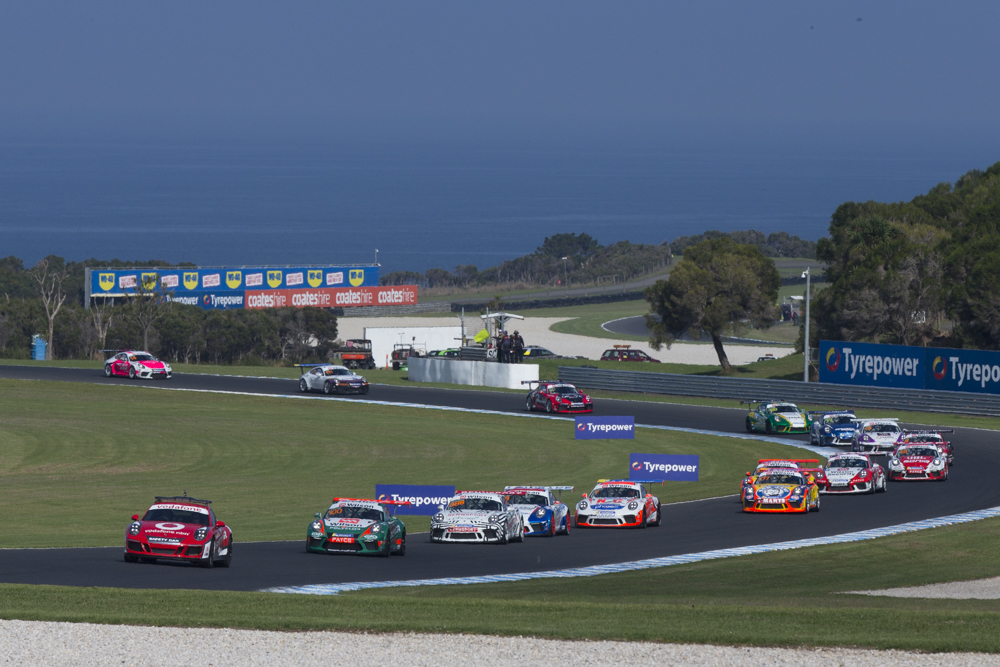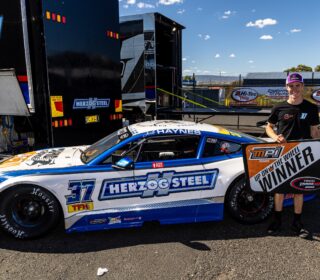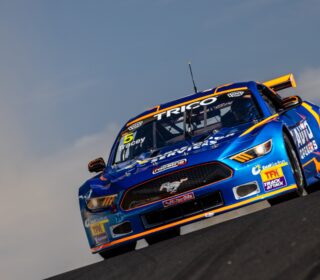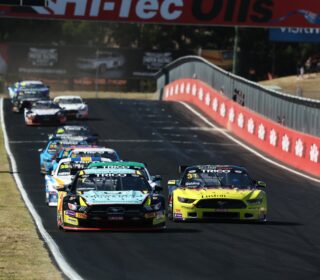THE CURIOUS CASE OF PHILLIP ISLAND

PHILLIP ISLAND is one of the special race tracks.
The 4.46km of sinuous bitumen perched precariously on the cliffs and overlooking bass straight is the fastest in Australia and arguably the most scenic. Its iconic status will likely never be disputed: Certainly only Mount Panorama holds a higher cache’ amongst the driving group, though some will say they actually prefer the Grand Prix circuit over the one located in the Bald Hills outside of Bathurst.
And yet Phillip Island’s place on the Supercars calendar remains an oddity, for the Phillip Island round has no real identity or real sense of purpose.
Strangely, for an event at such a grand circuit and in such an epic location, it’s a weekend that is all much ado about nothing.
Each year we roll into Phillip Island, marvel at how good a race track it is, go racing and then drive off without a second thought, which seems criminal for such a revered circuit.
That fact is underlined when you scroll though the 2018 calendar. When you do, it’s quite easy to pinpoint something special about almost every round of the championship.
Adelaide is the season opener and the biggest domestic motorsport event in Australia. The Grand Prix is the largest motorsport event in Australia. Symmons Plains, Barbagallo, Winton, Tailem Bend and possibly even Ipswich could easily be considered for being major regional events in their own backyards, while Darwin and Townsville are showpieces for their respective cities, full stop. Pukekohe is the only trip across the Tasman.
Sandown is the pre-Bathurst enduro warm-up and the Gold Coast is Schoolies for grown-ups and the enduro cup finale’. Newcastle is the end of all things for the year and even Sydney Motorsport Park, the only child of Sydney Motorsport, has a new purpose by hosting the SuperNight experiment this year.
Bathurst is, of course, Bathurst.
This is what works so well about the current calendar; Each event has a unique selling point that gives it meaning and context in the broader whole – even if it is, like Ipswich or Symmons Plains for example, only significant in its local region.
The same can’t be said for Phillip Island because unlike Ipswich or Symmons Plains, it’s not even close to being the biggest event at the circuit – let alone in the region. In raw numbers the Supercars round pales in comparison to MotoGP and World Superbikes, and those on the ground for the annual historic event suggest that it may also be a larger drawcard.
In a state that already has three other Supercars rounds amongst the calendar, namely the showpiece Grand Prix, the regional race at Winton and the traditional Bathurst warm-up, Phillip Island is just a tick in the box before moving onward.
And while it’s great to go to a circuit that the drivers love; in the end the sport isn’t really about the kind of corners Garth Tander or Mark Winterbottom want to tackle.
It must be noted that it is not that it is for a lack of effort on Supercars behalf: Last year, in a bid to spice up the weekend, a new format saw a pair of single driver, 250-km races introduced in an effort to give the event a boost. A good sponsor, in WD-40, has become attached to the event and that, too, is a positive.
Certainly, the format is a good one – the racing is high quality and with 2017’s tyre dramas behind them the pair of races this year were of a high quality; Saturday’s in particular was compelling as Jamie Whincup and Scott McLaughlin battled for the win.
However, though they have grown in the last two or three years, crowds remain modest at best and the event remains but a blip on what is a long stretch of having a race every fortnight.
So, what can change?
We’d suggest that the format needs to go even more extreme than a pair of 250km races; which on a circuit as quick as The Island are over in just 90 minutes. It’s not exactly an endurance test.
For comparison, the Saturday race at the Adelaide 500 this year went nearly two hours yet covered the same distance.
So as a unique selling point, add another 100km to each race. Call it the WD-40 Phillip Island 700 and all of a sudden you’ve got a unique selling point to market. Longer than the 500’s in Adelaide, Sandown and Newcastle. Shorter than Bathurst. Standing on it’s own as the longest single-driver event on the calendar.. perhaps anywhere.
Phillip Island may not be an overly physical circuit compared to Adelaide or Newcastle, but I’d wager than after 350km of racing each day at an average speed at well over 160kph, even the best guys would be reasonably wrung out.
The longer distance would add another element of strategy to the cause, throwing another pit stop into the mix and offering more variables for teams to play a role in the outcome through their work in pit lane, brave strategy calls, tyre and fuel management or otherwise.
Would this bring back the crowds? It’s hard to say. Possibly not, at least in a hugely significant manner. But it would offer more importance to the annual stop at Phillip Island in the context of the overall championship and the other events in Victoria, bringing it more into line with the other key events we’re so fortunate to have on the schedule.
It’s criminal that what is the best track in Australia and fundamentally a very good event has so little real meaning in the overall championship, though we admit that Scott McLaughlin may disagree thanks to his 300-point haul last weekend.
Here’s hoping the event can become something memorable so we can further revel in the unquestionable excellence that is that wonderful circuit overlooking Bass straight so we can keep going back for years to come.
What do you think? Is more distance the answer – or should it perhaps become a round of the Pirtek Enduro Cup by bringing back the Phillip Island 500 two-driver event? Let us know – comment on our Facebook page or let us know via Twitter, @theracetorque.
WORDS: Richard Craill
IMAGES: Porsche Carrera Cup Australia







